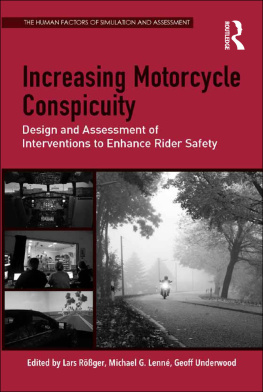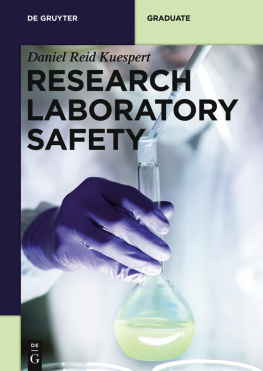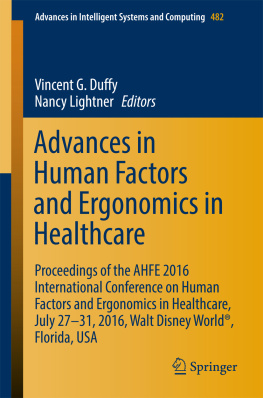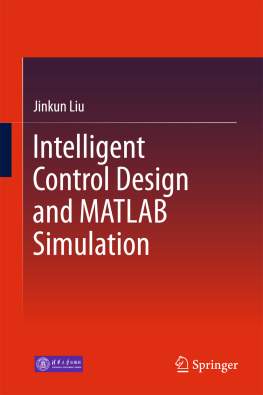INCREASING MOTORCYCLE CONSPICUITY
Human Factors of Simulation and Assessment
Series Editors
Michael Lenn
Monash University Accident Research Centre, Melbourne, Australia
Mark Young
School of Engineering and Design, Brunel University, London, UK
Ongoing advances in lower-cost technologies are supporting a substantive growth worldwide in the use of simulation and naturalistic performance assessment methods for research, training and operational purposes in domains such as road, rail, aviation, mining and healthcare. However, this has not been accompanied by a similar growth in the expertise required to develop and use such systems for evaluating human performance. Whether for research or practitioner purposes, many of the challenges in assessing operator performance, both using simulation and in natural environments, are common. What performance measures should be used, what technology can support the collection of these measures across the different designs, how can other methods and performance measures be integrated to complement objective data, how should behaviours be coded and the performance standards measured and defined? How can these approaches be used to support product development and training, and how can performance within these complex systems be validated? This series addresses a shortfall in knowledge and expertise by providing a unique and dedicated forum for researchers and experienced users of simulation and field-based assessment methods to share practical experiences and knowledge in sufficient depth to facilitate delivery of practical guidance.
Increasing Motorcycle Conspicuity
Design and Assessment of Interventions to Enhance Rider Safety
Edited by
LARS RGER
University of Technology, Dresden, Germany
MICHAEL G. LENN
Monash University Accident Research Centre, Melbourne, Australia
and
GEOFF UNDERWOOD
University of Nottingham, UK
ASHGATE
Lars Rger, Michael G. Lenn and Geoff Underwood 2015
All rights reserved. No part of this publication may be reproduced, stored in a retrieval system or transmitted in any form or by any means, electronic, mechanical, photocopying, recording or otherwise without the prior permission of the publisher.
Lars Rger, Michael G. Lenn and Geoff Underwood have asserted their right under the Copyright, Designs and Patents Act, 1988, to be identified as the editors of this work.
Published by
Ashgate Publishing Limited
Wey Court East
Union Road
Farnham
Surrey, GU9 7PT
England
Ashgate Publishing Company
110 Cherry Street
Suite 3-1
Burlington, VT 05401-3818
USA
www.ashgate.com
British Library Cataloguing in Publication Data
A catalogue record for this book is available from the British Library
The Library of Congress has cataloged the printed edition as follows:
Increasing motorcycle conspicuity : design and assessment of interventions to enhance rider safety / [edited] by Lars Rssger, Michael G. Lenn, Geoff Underwood.
pages cm -- (The human factors of simulation and assessment)
Includes bibliographical references and index.
ISBN 978-1-4724-1112-9 (hbk) -- ISBN 978-1-4724-1113-6 (ebook) -
ISBN 978-1-4724-1114-3 (epub) 1. Motorcycles--Safety measures. 2. Motorcycling--Safety measures. 3. Motorcycling accidents. 4. Automobile drivers--Psychology. 5. Visibility. I. Rssger, Lars, editor. II. Lenn, Michael G. editor. III. Underwood, Geoffrey (Geoffrey D. M.), editor.
TL440.I49 2015
363.1259--dc23
2014033827
ISBN: 978 1 4724 1112 9 (hbk)
ISBN: 978 1 4724 1113 6 (ebk-PDF)
ISBN: 978 1 4724 1114 3 (ebk-ePUB)
Contents
Stphane Espi
Zoi Christoforou, George Yannis, John Golias and Peter Saleh
Vanessa Beanland, Michael G. Lenn and Lars Rger
Geoff Underwood
Geoff Underwood, Editha van Loon and Katherine Humphrey
Eve Mitsopoulos-Rubens and Michael G. Lenn
Lars Rger, Jens Krzywinski, Frank Mhlbauer and Bernhard Schlag
Viola Cavallo and Maria Pinto
Joceline Rog and Fabrice Vienne
Vanessa Beanland, Michael G. Lenn and Geoff Underwood
Pnina Gershon and David Shinar
PART IV IMPLICATIONS DRAWN FROM
THE CASE STUDIES
Lars Rger, Michael G. Lenn and Stphane Espi
List of Figures
List of Tables
List of Contributors
Vanessa Beanland, Research School of Psychology, Australian National University, Canberra, Australia
Viola Cavallo, French Institute of Science and Technology for Transport, Development and Networks (IFSTTAR), Laboratory for Road Operations, Perception, Simulators and Simulations (LEPSIS), France
Zoi Christoforou, Ecole des Ponts et Chausses, 6&8 avenue Blaise Pascal Cit Descartes, Champs-sur-Marne, France
Stphane Espi, French Institute of Science and Technology for Transport, Development and Networks (IFSTTAR), Laboratory for Road Operations, Perception, Simulators and Simulations (LEPSIS), France
Pnina Gershon, Carnegie Mellon University, Department of Psychology, Human Factors Engineering & Driving Safety, Pittsburgh, United States of America
John Golias, Department of Transportation Planning and Engineering, School of Civil Engineering, National Technical University of Athens, Greece
Katherine Humphrey, University of Nottingham, School of Psychology, United Kingdom
Jens Krzywinski, University of Technology Dresden, Faculty of Mechanical Science and Engineering, Industrial Design Engineering, Germany
Michael G. Lenn, Monash University Accident Research Centre, Monash University, Victoria, Australia
Eve Mitsopoulos-Rubens, Monash University Accident Research Centre, Monash University, Victoria, Australia
Frank Mhlbauer, University of Technology Dresden, Faculty of Mechanical Science and Engineering, Industrial Design Engineering, Germany
Maria Pinto, French Institute of Science and Technology for Transport, Development and Networks (IFSTTAR), Laboratory for Road Operations, Perception, Simulators and Simulations (LEPSIS), France
Joceline Rog, Laboratory of Ergonomics and Cognitive Sciences applied to Transport (LESCOT) Transport, Health, Safety Department, French Institute of Science and Technology for Transport, Development and Networks (IFSTTAR), France
Lars Rger, University of Technology Dresden, Faculty of Traffic Science, Traffic and Transportation Psychology, Germany
Peter Saleh, AIT Austrian Institute of Technology GmbH, Mobility Department, Transportation Infrastructure Technologies, Austria
Bernhard Schlag, University of Technology Dresden, Faculty of Traffic Science, Traffic and Transportation Psychology, Germany
David Shinar, Ben Gurion University of the Negev, Israel
Geoff Underwood, University of Nottingham, School of Psychology, United Kingdom
Editha van Loon, University of Nottingham, Division of Psychiatry, United Kingdom
Fabrice Vienne, Laboratory for Road Operations, Perception, Simulators and Simulations (LEPSIS) Component and Systems Department, French Institute of Science and Technology for Transport, Development and Networks (IFSTTAR), France
George Yannis, Department of Transportation Planning and Engineering, School of Civil Engineering, National Technical University of Athens, Greece
Next page





